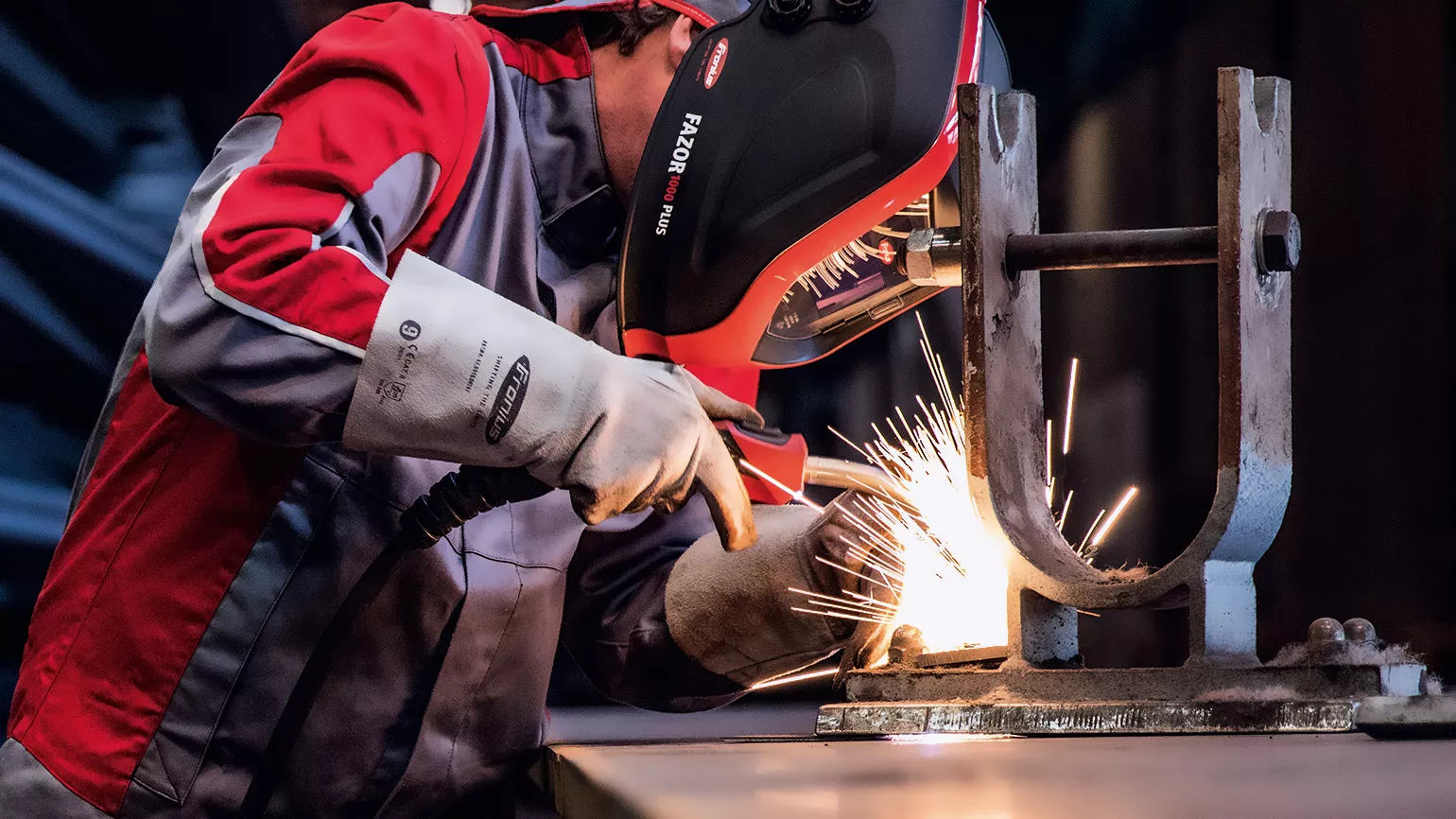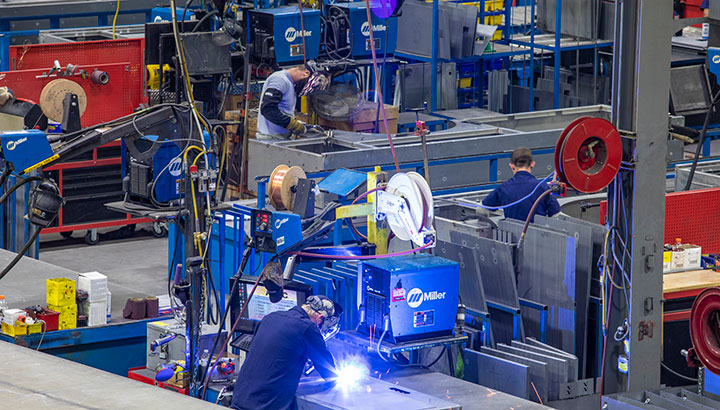All Concerning Welding: Trick Insights Into Techniques and Finest Practices for Success
Welding encompasses a variety of techniques, each matched for specific materials and applications. Understanding these approaches, such as GMAW, SMAW, and TIG, is important for achieving perfect outcomes. The appropriate devices and security methods can not be overlooked. As prep work and repairing play critical roles in the welding process, grasping these aspects can substantially boost the high quality of the end product. What are the vital elements that ensure a successful weld?
Understanding Various Welding Techniques
Welding methods incorporate a range of approaches, each fit to particular applications and materials. Amongst the most common techniques are Gas Steel Arc Welding (GMAW), Protected Steel Arc Welding (SMAW), and Tungsten Inert Gas Welding (TIG) GMAW, additionally called MIG welding, is prominent for its speed and convenience, making it perfect for slim materials. SMAW, or stick welding, is preferred for its simplicity and effectiveness in exterior atmospheres, especially with thicker metals. TIG welding offers precision and control, making it appropriate for complex job and non-ferrous metals (Fabrication). Each technique has its special advantages and considerations, enabling welders to choose the ideal method based on the job's needs, product type, and wanted results. Recognizing these techniques is essential for effective welding
Crucial Welding Equipment and Tools
While different welding strategies require details abilities, the ideal devices and devices are just as vital for attaining quality results. Crucial welding equipment includes welding devices, which vary depending on the technique-- such as MIG, TIG, or stick welding. Safety equipment, consisting of safety helmets, handwear covers, and aprons, guarantees security and comfort throughout the procedure. In enhancement, clamps and components assist safeguard products in position, making certain accuracy in welds. Consumables like welding rods, cable, and securing gas are also important parts that affect the top quality of the weld. In addition, devices such as mills and cutters help with surface area prep work and post-weld completing, adding to a specialist result. Purchasing high-grade tools inevitably enhances the efficiency and performance of welding tasks.
Safety And Security Practices in Welding
Appropriate safety methods are vital in the welding market to protect workers from possible dangers. Welders have to wear proper personal protective tools (PPE), consisting of safety helmets with proper shading, gloves, and flame-resistant apparel. Appropriate air flow is crucial to reduce direct exposure to dangerous fumes and gases produced throughout the welding process. In addition, employees ought to be trained in the appropriate handling of welding equipment to stop mishaps. Fire safety and security procedures, such as keeping combustible materials far from the welding area and having fire extinguishers readily available, are essential. Regular inspections of equipment and work areas can assist recognize prospective hazards before they lead to mishaps. By adhering to these security methods, welders can create a much safer working setting and minimize risks connected with their profession.
Preparing Materials for Welding
Preparing materials for welding is an important step that substantially influences the top quality and integrity of the end product (Montana Mobile Welding and Repair Welding). Correct prep work involves cleansing the surfaces to eliminate pollutants such as dirt, corrosion, and oil, which can jeopardize the weld. Techniques such as grinding, fining sand, or making use of solvents are commonly employed to achieve a tidy surface area. In addition, ensuring that the materials mesh well is vital; spaces can cause weak welds. It's additionally crucial to think about the positioning and positioning of the elements, as this will certainly impact the convenience of welding and the final end result. Ultimately, picking the ideal filler product and guaranteeing compatibility with the base metals is necessary for attaining solid, resilient welds
Tips for Getting High-Quality Welds
Achieving high-quality welds needs interest to information and adherence to best techniques throughout the welding procedure. Proper joint preparation is essential, making certain surfaces are clean and cost-free from impurities. Selecting the proper filler product and welding method based upon the base steels is critical for optimal bonding. Maintaining consistent traveling rate and angle while welding can promote and stop issues harmony. Furthermore, controlling warm input is vital; excessive warm can lead to warping and weakened joints. On a regular basis inspecting the welds during the process enables instant changes if essential. Using ideal post-weld therapies, such as cleansing and anxiety relief, can enhance the toughness and stability of the weld, ultimately guaranteeing a successful outcome.
Repairing Typical Welding Issues
Welding usually provides obstacles that can affect the high quality and stability of the final item. Common issues such as porosity, inconsistent weld grains, and overheating can arise, each calling for certain fixing strategies. Recognizing these problems is essential for welders to boost their abilities and achieve perfect outcomes.
Porosity Issues Explained
Although porosity can commonly be neglected, it continues to be an essential problem in welding that can endanger the integrity of a finished item. Porosity describes the presence of small gas pockets within the weld bead, which can lead and weaken the joint to premature failure. This issue usually develops from impurities, wetness, or incorrect shielding gas insurance coverage throughout the welding procedure. To minimize porosity, welders ought to validate that the base materials are tidy and dry, utilize ideal securing gases, and keep regular welding specifications. On a regular basis examining the equipment and setting can additionally help identify prospective problems prior to they manifest in the weld. Resolving porosity efficiently is necessary for achieving solid, sturdy welds that meet quality requirements.

Inconsistent Weld Beads
Inconsistent weld grains can considerably impact the high quality and toughness of a completed product. Numerous elements add to this concern, consisting of incorrect travel speed, wrong amperage settings, and inconsistent electrode angles. When the welder relocates also quickly, a bead might show up slim and lack infiltration, while relocating too slowly can trigger excessive accumulation. Additionally, using the incorrect amperage can lead to either damaging or extreme spatter, both of which concession weld stability. The welder's method, such as irregular lantern movement, can also result in uneven bead look. To minimize these issues, welders should focus on preserving constant, regulated movements and making certain correct equipment setups to achieve uniformity in their welds. Consistency is vital to accomplishing solid and trustworthy welds.
Overheating and Warping Issues
Too much warm throughout the welding procedure can cause significant overheating and buckling issues, affecting the structural integrity of the workpiece. These troubles frequently materialize as distortion, which can endanger positioning and fit-up, making further link assembly testing. Variables adding to overheating include the choice of welding parameters, such as voltage and take a trip rate, along with the sort of product being bonded. To mitigate these concerns, welders should keep regular traveling rate and appropriate warm input while keeping an eye on the workpiece temperature level. In addition, pre-heating or post-weld heat therapy can aid alleviate anxieties brought on by fast cooling - Belgrade Fabrication. Routine examination and adherence to ideal techniques are necessary in protecting against overheating and ensuring the long life and dependability of bonded structures
Regularly Asked Concerns
What Are the Occupation Opportunities in the Welding Sector?
The welding market supplies diverse job opportunities, consisting of settings Go Here as welders, assessors, engineers, and instructors. Specialists can work in manufacturing, building and construction, aerospace, and automobile sectors, benefiting from solid demand and affordable wages in numerous roles.
Exactly How Can I Improve My Welding Rate Without Giving Up Quality?
To enhance welding rate without giving up high quality, one ought to exercise efficient methods, keep devices, optimize settings, and boost hand-eye coordination. Regular training and seeking responses can also greatly contribute to attaining faster, top notch welds.
What Certifications Are Available for Welders?
Various accreditations exist for welders, including those from the American Welding Society (AWS), the National Facility for Construction Education And Learning and Research (NCCER), and numerous industry-specific companies. These qualifications boost employability and demonstrate skill proficiency.
Just How Does Welding Impact the Residences of Metals?
Welding affects the properties of metals by changing their microstructure, which can bring about adjustments in toughness, solidity, and ductility. Warmth input and cooling rates throughout the process considerably affect these product characteristics.
Can I Bonded Dissimilar Metals With Each Other?
